True/False
Indicate whether the
statement is true or false.
|
|
|
1.
|
Gears provide a slip action as a means to transmit power.
|
|
|
2.
|
Gears can be used on multiple shafts.
|
|
|
3.
|
Ferrous materials contain iron.
|
|
|
4.
|
Gears must have the same diametral pitch in order to mesh.
|
|
|
5.
|
Simplicity in design and manufacturing make spur gears an economical type of
gear.
|
|
|
6.
|
A worm gear can be used to hold a load or prevent a system from
reversing.
|
|
|
7.
|
Gear alignment isn’t important.
|
|
|
8.
|
A gearbox is considered a speed reducer.
|
Modified True/False
Indicate
whether the statement is true or false. If false, change the identified word or phrase to make the
statement true.
|
|
|
9.
|
Helical gears are an improved variation of a spur gear.
|
Multiple Choice
Identify the
choice that best completes the statement or answers the question.
|
|
|
10.
|
This is a __________ gear. 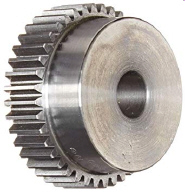 a. | helical | c. | bevel | b. | worm | d. | spur |
|
|
|
11.
|
This is a __________ gear. 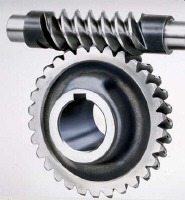 a. | helical | c. | bevel | b. | worm | d. | spur |
|
|
|
12.
|
This is a __________ gear. 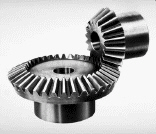 a. | helical | c. | bevel | b. | worm | d. | spur |
|
|
|
13.
|
This is a ________ gear. 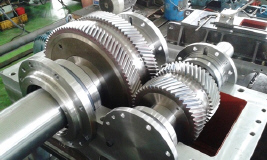 a. | herringbone | c. | double helical | b. | helical | d. | rack |
|
|
|
14.
|
This is a ________ gear. 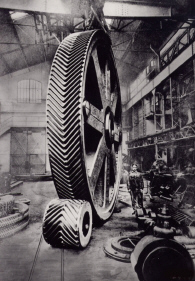 a. | herringbone | c. | double helical | b. | helical | d. | rack |
|
|
|
15.
|
This is a ________ gear. 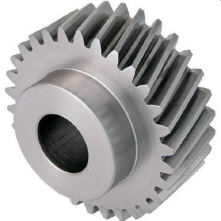 a. | herringbone | c. | double helical | b. | helical | d. | rack |
|
|
|
16.
|
This is a ________ gear. 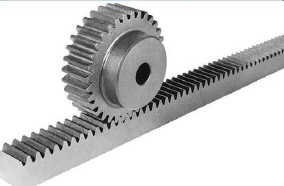 a. | herringbone | c. | double helical | b. | helical | d. | rack |
|
|
|
17.
|
Use the gears below to calculate the output (driven) speed if the driver speed
is 1600RPM. 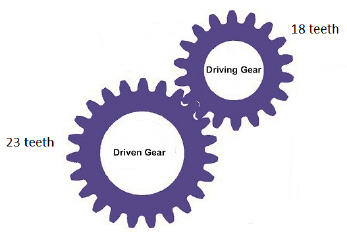 a. | 2048 RPM | c. | 1250 RPM | b. | 28,800 RPM | d. | 36,800 RPM |
|
|
|
18.
|
Use the gears below to calculate the output (driven) torque if the driver torque
is 500ft-lbs. 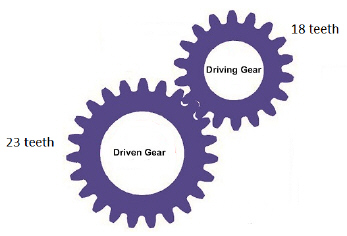 a. | 390.625 ft-lbs | c. | 9,000 ft-lbs | b. | 640 ft-lbs | d. | 11,500 ft-lbs |
|
|
|
19.
|
What is the gear ratio at shaft 2? 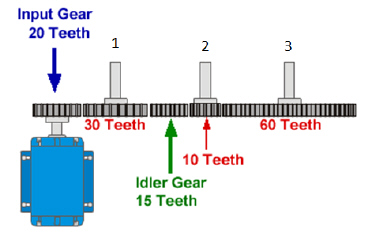 a. | 20/10 | c. | 30/10 | b. | 60/10 | d. | 10/20 |
|
|
|
20.
|
What is the compound gear ratio? 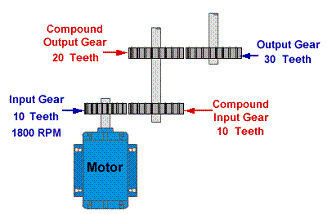
|
|
|
21.
|
What is the overall output torque?  a. | 114 in-lbs | c. | 1136 in-lbs | b. | 787 in-lbs | d. | 165 in-lbs |
|
Completion
Complete each
statement.
|
|
|
22.
|
___________ are toothed machine parts, such as a wheel or cylinder, that mesh
with another toothed part to transmit power and to change speed or direction.
|
|
|
23.
|
When two gears with differeing numbers of teeth are used in a drive, the gear
with the lesser number of teeth is call the ________.
|
|
|
24.
|
_________ gear trains are two gears mounted on a common shaft meshing with other
gears.
|
|
|
25.
|
Materials such as brass, composite fibers, or plastics are considered _________
materials.
|
|
|
26.
|
Materials such as steels and alloy irons are considered ________
materials.
|
|
|
27.
|
The shape and ______ of gear tooth is critical to how it handles the various
loads that are acting on it.
|
|
|
28.
|
The __________ pitch of a gear is the number of teeth in the gear for each inch
of pitch diameter.
|
|
|
29.
|
Because of the significant amount of friction generated by the sliding action of
spur gears meshing, they are used in _________ to moderate speed applications.
|
|
|
30.
|
Spur gears may have teeth that are external, internal, or on a ______.
|
|
|
31.
|
The _________ is a cylinder with threads cut on the outside.
|
|
|
32.
|
________ gears are cut on cones and usually operate on shafts at 90
degrees.
|
|
|
33.
|
__________ ___________ gears have a set of right
and left hand teeth on the same gear separted by a space.
|
|
|
34.
|
A ______________ gear has left and right teeth that join in the center to
form and apex.
|
|
|
35.
|
__________ ___________ is defined as the distance between the
tips of the pinion teeth and roots of the ring gear teeth.
|
|
|
36.
|
A gear’s function is to transmit torque and ________ motion between the
prime mover and driven equipment.
|
|
|
37.
|
A ________ ___________ that has
not been properly installed, aligned, and maintained will have a shortened life.
|
|
|
38.
|
___________ is a general term used to describe a somewhat uniform loss of
material from the contacting surface of the gear tooth.
|
|
|
39.
|
Enclosed gear drives, known as ____________ or speed reducers, are gears that
are mounted on shafts supported by bearings, and enclosed and sealed in a case.
|
|
|
40.
|
___________ gearboxes use internal gears to transmit loads in a compact space
with shafts in the line.
|
|
|
41.
|
___________ of all rotating elements is needed to prevent seizing and
overheating within the unit.
|
Matching
|
|
|
a. | Diametral Pitch | c. | Standard Center Distance | b. | Circular
Pitch |
|
|
|
42.
|

|
|
|
43.
|

|
|
|
44.
|

|
|
|
a. | Center distance | f. | Clearance | b. | Backlash | g. | Circular Pitch | c. | Diametral
Pitch | h. | Pressure
Angle | d. | Addendum | i. | Dedendum | e. | Modular Gearing |
|
|
|
45.
|
Related to the shape of the gear tooth.
|
|
|
46.
|
The measurable space at the pitch circle between two meshing gears on the
nondriving side of the face.
|
|
|
47.
|
The radial distance between the top of the tooth of the pinion and the bottom
of a tooth of the gear.
|
|
|
48.
|
The ratio of the pitch diameter in millimeters to the number of teeth in the
gear.
|
|
|
49.
|
The distance from a point on a gear tooth to a corresponding point on the next
tooth, measured along the arc of the pitch circle.
|
|
|
50.
|
The height of the tooth above the pitch circle.
|
|
|
51.
|
The distance between nonintersecting axes of the mating gears.
|
|
|
52.
|
The number of teeth in the gear for each inch of pitch diameter.
|
|
|
53.
|
The depth of the tooth below the pitch circle.
|
|
|
a. | Service Factor | f. | Gearbox Ratio | b. | Thermal Rating | g. | Horsepower and Torque
Capacity | c. | Backstops | h. | Thrust Loads | d. | Efficiency | i. | Mechanical rating | e. | Overhung
Load |
|
|
|
54.
|
Mechanisms installed as part of the gearbox to prevent reverse rotation of the
shafts.
|
|
|
55.
|
A right angle load applied to the input and output shafts of the gearbox
through a connected component.
|
|
|
56.
|
The power delivered out divied by the input power multiplied by 100.
|
|
|
57.
|
Part of the selection procedure for gearboxes.
|
|
|
58.
|
The maximum power or torque a speed reducer can transmit, based on the strength
of its parts.
|
|
|
59.
|
The maximum power or torque that can be transmitted continuously through a
drive, based on its ability to dissipate the heat generated internally.
|
|
|
60.
|
The ability to transmit the horsepower of the prime mover.
|
|
|
61.
|
Input speed divided by the output speed.
|
|
|
62.
|
Loads that are imposed on gearboxes that are paralled to their axes.
|